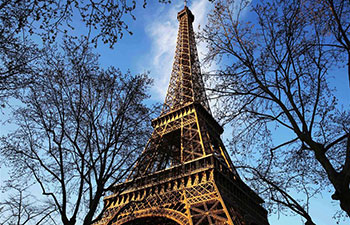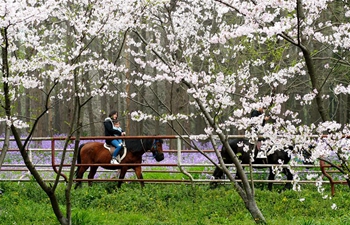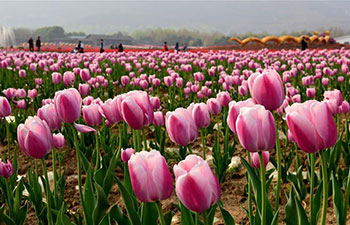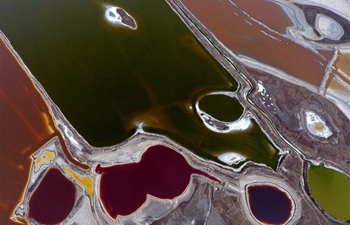HELSINKI, March 31 (Xinhua) -- Industrial poisons and less open dumps of garbage have been deemed the reasons behind the reduction of flocks of seagulls in Finland.
Since the prohibition of polychlorinated biphenyls (PCB) in industries in Finland in 1990, its presence in Baltic herring has declined by 80 percent, but the amounts found in seagulls only by 20 percent, said Martti Hario, a researcher with a long career at the Finnish Natural Resources Institute and its predecessors.
Despite less poisons have been found in the Baltic herring, which many seagulls feed on, the presence of PCB and other poisons continue impacting, Hario told national broadcaster Yle on Sunday.
The official Finnish recommendation for human consumption of the Baltic herring is that it should not be consumed more than once or twice per month, although the poison levels have decreased. The same applies to salmon and trout caught in natural waters.
Teemu Lehtiniemi, the research director of Bird Life Finland, told Yle earlier that improved garbage collection has also diminished the food available to sea gulls. More efficient agriculture has further impacted.
Researcher Hario said the number the seagull subgroup "small black-backs" (Larus fuscus) has declined to a half in ten years. It has been listed as very endangered.
Out of the six subgroups of seagulls in Finland, three others are endangered with the amount of birds now a third less than ten years ago. Two subgroups, the common gull and the laughing gull, do better as they do not eat herring, but look for other food.
Hario also said that the market places crowded with tourists and food vendors are simply a good food opportunity and seagulls fly in even from far for them.
However, the threat has created little sympathy in the cities that try to find ways of keeping seagulls at a distance. Feeling respectful towards an endangered bird may be little consolation to a touristic market place visitor who loses a just purchased ice cream or sausage.
At the Helsinki market place, for example, seagulls make precision sorties and snatch the food even from the hands of people, without harming them.
Cities have tried to reduce the annoying presence of seagulls with protective nets and spreading their alert sounds of from loudspeakers, but with little success.
Seagulls have found roof tops of high-rises as good places for nests as mammal predators cannot get there. An office building in Mikkeli, eastern Finland, has purchased a stuffed hawk, an owl and a plastic snake.
Lehtiniemi from Bird Life Finland was not pleased with the preventive measures. He reminded that there have always been seagulls in market places, but the tolerance level of people has declined.
"People are so concerned with food hygiene that no nature is allowed close to where food is served. To me it is a nightmare that nature would not be allowed in towns", Lehtiniemi said.
A hospital had expressed concern about the health risks from seagulls nesting on the hospital roof, "but the patients entering the hospital could be a bigger risk in terms of spreading diseases", he was quoted.
Seagulls are protected animals in Finland and harder measures require a permit.













